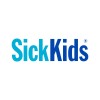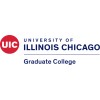
A sTudy of Low Dose vs Standard Dose of tIcaGrelor on Platelet Function After intErvention for Acute...
Acute Coronary Syndrome Patients With Diabetes After PCIIn this study, the investigates try to confirm the hypothesis that low dose ticagrelor(60mg) had similar anti-platelets function compared with the standard dose ticagrelor in acute coronary syndrome patients with diabetes. Totally 40 ACS patients with diabetes will be divided into 2 groups randomly after PCI for one month. Group 1 will be treated with ticagrelor 90mg and aspirin 100mg after PCI for 12 months as the standard group; Group2 will be treated with ticagrelor 60mg plus aspirin 100 mg for 11 months after one month standard DAPT treatment. The platelets function will be tested in VASP and TEG methods at 1 and 2 months after PCI as the primary endpoints.The clinical events will be observed 12 months after PCI.

Individualized Positive End-expiratory Pressure Guided by End-expiratory Lung Volume in the Acute...
Respiratory Distress SyndromeAdultDuring the acute respiratory distress syndrome (ARDS), patients' response to positive end-expiratory pressure (PEEP) is variable according to different degrees of lung recruitability. The search for a tool to individualize PEEP on the basis of patients' individual response is warranted. Measurement of end-expiratory lung volume (EELV) by the nitrogen washin-washout technique, bedside available from recent ICU ventilators, has been shown to reliably estimate PEEP-induced alveolar recruitment and may therefore help titrate PEEP on patient's individual requirements. The authors designed an open-label, multicenter, randomized trial to test whether an individualized PEEP setting protocol driven by EELV may improve a composite clinical outcome in patients with moderate-to-severe ARDS.

A Randomized Study of BPN14770 in Male Adolescents (Aged 12 to < 18 Years) With Fragile X Syndrome...
Fragile X SyndromeThis is a 2-part study, with each part having a unique set of objectives for male adolescents aged 12 to < 18 years with fragile X syndrome (FXS). Part 1 is an open-label, single-dose, pharmacokinetics (PK) assessment of BPN14770 25 mg and 50 mg, while Part 2 is double-blind (DB) and randomized between two treatment groups (Study Drug and Placebo)

Class IV Laser Therapy on Ejection Fraction, Cardio Biomarkers and Functional Outcomes
Acute Coronary SyndromeA total of 60 Individuals with Acute coronary Syndrome who underwent angioplasty with or without stent will be recruited by purposive sampling method in a randomized double-blinded sham controlled trial. Recruited participants will be divided into two group of equal size (n = 30): Sham control group and experimental group by block randomization. The experimental group will subject to Class IV laser therapy along with the standard treatment regime at three spot(s) over the pericardium (left parasternal 2nd, 3rd intercostal space and apex) for a duration of 60 seconds at each point.; immediately after the angioplasty and subsequent two days. Left ventricular ejection fraction will be assessed at base line and after 3 days post-interventions. Cardiac biomarker (Troponin I) will be assessed at base line, peak hours (at 10 hour after revascularization) and on third day post intervention. Function outcomes will be assessed at baseline and at one month follow up.

Less Bleeding by Omitting Aspirin in Non-ST-segment Elevation Acute Coronary Syndrome Patients
Non ST Segment Elevation Acute Coronary SyndromeRationale: Dual antiplatelet therapy, consisting of aspirin and a P2Y12-inhibitor, reduces the risk of stent thrombosis, myocardial infarction and stroke after coronary stent implantation. Inevitably, it is also associated with a higher risk of (major) bleeding. Given the advances in stent properties, stenting implantation technique and pharmacology, it may be possible to treat patients with a single antiplatelet strategy by completely omitting aspirin. Objective: This study will assess whether omitting aspirin reduces the rate of major or minor bleeding while remaining non-inferior to the current standard of care with regards to ischemic events in patients with non-ST segment elevation acute coronary syndrome. Study design: Open-label, multicentre randomized controlled trial. Study population: Adult patients presenting with non-ST segment elevation acute coronary syndrome undergoing percutaneous coronary intervention. Intervention: In the intervention group aspirin will be completely omitted from the antiplatelet regimen in the 12 months following PCI. Main study endpoints: The primary bleeding endpoint is major or minor bleeding defined as Bleeding Academic Research Consortium type 2, 3 or 5 bleeding at 12 months. The primary ischemic endpoint is ischemic events defined as the composite of all-cause death, myocardial infarction and stroke at 12 months.

Personalized Lifestyle Program in Treatment Resistant Irritable Bowel Syndrome
Irritable Bowel SyndromePatients with treatment resistant irritable bowel syndrome (IBS) are recruited from secondary care gastroenterology clinics in Stockholm and screened for eligibility criteria. Participants follow a 12 month treatment program at Nordic Clinic, a clinic offering personalized lifestyle interventions based on the functional medicine model. In parallel with the treatment program, the participant are clinically assessed for the evaluation of the treatment after 6 months, 12 months, 18 months and 24 months

MT2013-31: Allo HCT for Metabolic Disorders and Severe Osteopetrosis
Mucopolysaccharidosis DisordersHurler Syndrome27 moreThis single-institution, phase II study is designed to test the ability to achieve donor hematopoietic engraftment while maintaining low rates of transplant-related mortality (TRM) using busulfan- and fludarabine-based conditioning regimens with busulfan therapeutic drug monitoring (TDM) for patients with various inherited metabolic disorders (IMD) and severe osteopetrosis (OP).

Oxygen Versus Medical Air for Treatment of CSA in Prader Will Syndrome
Sleep ApneaCentral1 moreThe aim of this study is to determine if treatment with Medical Air (21% oxygen in room air) compared to supplemental oxygen (100% oxygen) will lead to similar improvements in the central apnea-hypopnea index (CAHI) for infants with Prader-Willi Syndrome. Despite the vast amount of research investigating the cause of central sleep apnea, there remain gaps in knowledge, lending to further research efforts. The decision to compare oxygen to medical air is based on several theorized mechanisms. The first of which is the supposition that provision of medical air may act as an arousal stimulus for the hypothalamus, thereby preventing sleep disordered breathing. Secondly, the hypercapnic challenge performed by Livingston et al demonstrated a delayed hypercapneic arousal response in PWS subjects despite simultaneous hyperoxia, leading us to question if therapeutic oxygen really plays a significant role in treating CSA. Lastly, the delivery of medical air via nasal prongs may provide sufficient arousal to terminate the cycle of events leading to central apnea, as described by Urquhart et al. A deeper understanding of central sleep apnea is essential to ameliorating its adverse sequelae, which include symptoms of ADHD, impaired attention, behavioral problems, and academic difficulties.

Study of Intensity Modulated Total Marrow Irradiation (IM-TMI) in Addition to Fludarabine/Busulfan...
Acute Myeloid LeukemiaMyelodysplastic SyndromesThe study is a Phase II clinical trial. Patients will receive intensity modulated total marrow irradiation (TMI) at a dose of 9 Gy with standard myeloablative fludarabine/ i.v. targeted busulfan (FluBu) conditioning prior to allogeneic hematopoietic stem cell transplant (HSCT).

Naive T Cell Depletion for Preventing Chronic Graft-versus-Host Disease in Children and Young Adults...
Acute Biphenotypic LeukemiaAcute Leukemia10 moreThis phase II trial studies how well naive T-cell depletion works in preventing chronic graft-versus-host disease in children and young adults with blood cancers undergoing donor stem cell transplant. Sometimes the transplanted white blood cells from a donor attack the body's normal tissues (called graft versus host disease). Removing a particular type of T cell (naive T cells) from the donor cells before the transplant may stop this from happening.
